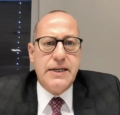- Home
- Dual Antiplatelet Therapy for Acute Stroke and TIA: Current Best Practice and Emerging Strategies
Dual Antiplatelet Therapy for Acute Stroke and TIA: Current Best Practice and Emerging Strategies
- Heart Failure
- Prevention
Available Credit:
- 1.00
Course Published On:
Course Expiry Date:

Overview
In the days and weeks following a minor stroke or transient ischaemic attack (TIA), patients are at increased risk for a secondary stroke. Secondary strokes are common and are often more disabling and more likely to be fatal than the index event. Patients are at the greatest risk for a secondary stroke in the 30 days following an acute event, with an estimated 5.2% of patients experiencing a recurrent ischaemic stroke in the first 7 days after an index event. Clinical studies have demonstrated that the acute treatment of ischaemic stroke or TIA should include antiplatelet therapy within 24 hours of an index event with dual antiplatelet therapy (DAPT; aspirin + clopidogrel) recommended for 21 days after an event. While the benefit of DAPT for reducing thrombotic risk after a stroke has been established, findings from recent studies suggest that alternative agents and durations of treatment following and acute minor ischaemic stroke or TIA may further reduce the risk of secondary stroke and improve outcomes for patients. Such data also highlight the need for a personalized approach to secondary stroke prevention which takes account of individual risk factors in terms of underlying causation, health status and bleeding risk. Increased awareness among physicians of these recent developments and strategies to assess early stroke risk and use this information to guide the choice of therapy is necessary to implement these findings in clinical practice.
Disclosure
In compliance with EBAC / EACCME guidelines, all speakers/chairpersons participating in this programme have disclosed or indicated potential conflicts of interest which might cause a bias in the presentations.
The Organising Committee/Course Director is responsible for ensuring that all potential conflicts of interest relevant to the event are declared to the audience prior to the CME activities.
This programme is supported by an unrestricted educational grant from AstraZeneca. The scientific programme has not been influenced in any way by the sponsor.
Terms & Conditions
Radcliffe Education requires contributors to our CME programmes to disclose any relevant financial relationships that have occurred within the past 12 months that could create a conflict of interest. These will be identified in the faculty section if applicable.
This session ‘Dual antiplatelet therapy for acute stroke and TIA: Current best practice and emerging strategies’ is accredited by the European Board for Accreditation in Cardiology (EBAC) for 1 hour of external CME credits.
Each participant should claim only those hours of credit that have actually been spent in the educational activity. EBAC works according to the quality standards of the European Accreditation Council for Continuing Medical Education (EACCME), which is an institution of the European Union of Medical Specialists (UEMS).
Through an agreement between the European Board for Accreditation in Cardiology and the American Medical Association, physicians may convert EBAC External CME credits to AMA PRA Category 1 Credits™. Information on the process to convert EBAC credit to AMA credit can be found on the AMA website.
Instructions to Participants
There is no fee for taking part in this online learning activity.
Activities are designed to be completed within 60 minutes and must be completed by the registered user. Physicians should only claim credits for time spent on the activity. To successfully earn credit, participants must complete the activity in full in the indicated time frame.
To complete the course and claim certification participants must:
- Read the course outline information supplied and complete pre-test questions if supplied prior to starting the activity. Users must read and study the activity in its entirety before completing the post-test questions.
- Your results will be automatically saved and if a pass score is achieved (where applicable), you may be eligible to claim credit for the activity and receive a certificate of completion.
Learning Objectives
- To highlight the continued high unmet need for strategies to prevent stroke or death for patients experiencing acute stroke or TIA
- To outline the guidelines on the use of dual antiplatelet therapy for patients presenting with acute stroke or TIA
- To examine recent evidence from clinical trials on novel strategies for improving outcomes for patients presenting with acute stroke or TIA and how these data and insights can be applied in clinical practice
Module |
Title |
Duration |
Speakers |
|---|---|---|---|
| 1 | Chairperson’s welcome and introduction | Pierre Amarenco (Paris University, FR) | |
| 2 | Secondary prevention following acute minor stroke or TIA: Understanding the ongoing risk | Peter Rothwell (University of Oxford, UK) | |
| 3 | Current best practice: Evidence-based antiplatelet therapy for secondary stroke prevention | Pierre Amarenco (Paris University, FR) | |
| 4 | Evolving role of dual antiplatelet therapy for stroke prevention: Advancing best practice for patients at high risk | Clay Johnston (The University of Texas, Austin, US) | |
| 5 | Clinical decision making for the patient presenting with acute stroke | Peter Schellinger (Universitatslinikum Der Ruhr-Universitat Bochum, DE) | |
| 6 | Faculty discussion: The use of anti-platelet therapy to manage patients following an acute stroke | Pierre Amarenco (Paris University, FR) Peter Rothwell (University of Oxford, UK) Clay Johnston (The University of Texas, Austin, US) Peter Schellinger (Universitatslinikum Der Ruhr-Universitat Bochum, DE) |
Secondary prevention following acute minor stroke or TIA: Understanding the ongoing risk
Duration:
Current best practice: Evidence-based antiplatelet therapy for secondary stroke prevention
Duration:
Speakers: Pierre Amarenco (Paris University, FR)
Evolving role of dual antiplatelet therapy for stroke prevention: Advancing best practice for patients at high risk
Duration:
Speakers: Clay Johnston (The University of Texas, Austin, US)
Clinical decision making for the patient presenting with acute stroke
Duration:
Speakers: Peter Schellinger (Universitatslinikum Der Ruhr-Universitat Bochum, DE)
Faculty discussion: The use of anti-platelet therapy to manage patients following an acute stroke
Duration:
Speakers: Pierre Amarenco (Paris University, FR) Peter Rothwell (University of Oxford, UK) Clay Johnston (The University of Texas, Austin, US) Peter Schellinger (Universitatslinikum Der Ruhr-Universitat Bochum, DE)
Course Director
Speaker













